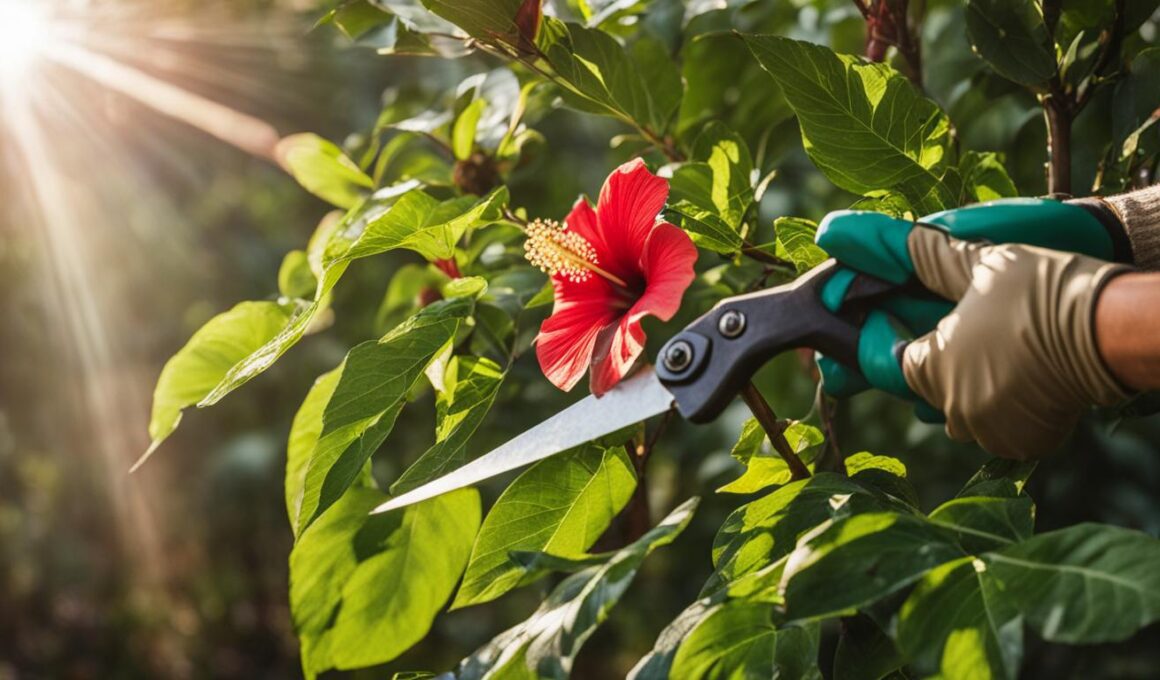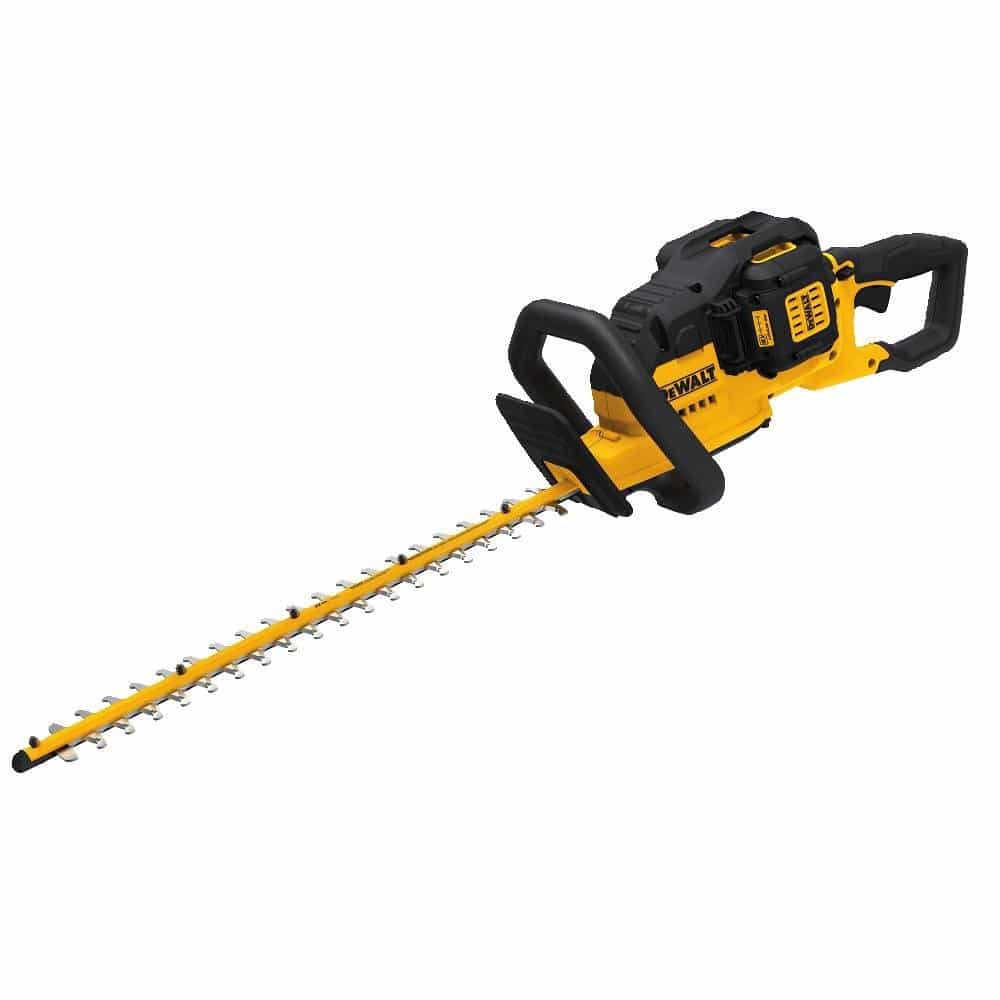Welcome to our guide on caring for braided hibiscus trees. Whether you’re a seasoned gardener or just starting out, these tropical plants can add a touch of beauty to any garden or indoor space. In this section, we’ll provide you with essential tips and techniques to ensure your braided hibiscus trees thrive.
Caring for a braided hibiscus tree requires attention and proper care to ensure its health and vitality. While these stunning plants thrive in USDA zone 10 and above, they can still be successfully grown in colder climates by keeping them in containers and moving them indoors during winter. This allows you to enjoy their vibrant blooms year-round.
When selecting a braided hibiscus tree, choose one with small buds rather than fully bloomed flowers, as they are hardier during transport. Transplant the tree into a large container with good drainage, and place it in a spot that receives at least 6 hours of sunlight daily. Adequate sunlight is crucial for the tree’s growth and blooming process.
Watering is key to maintaining the health of your braided hibiscus tree. Ensure the soil is consistently moist, but not waterlogged. Water the plant frequently, especially during hot summer months, by checking the top inch of soil and watering at soil level to avoid wetting the leaves.
Fertilization is essential for the tree’s overall health and growth. Use an all-purpose liquid plant food or a time-release fertilizer every two weeks to provide the tree with necessary nutrients. This will result in lush foliage and abundant blooms.
Regular pruning is necessary to encourage growth and maintain a manageable size. Trim the tree regularly, removing any dead or diseased branches. Prune just above a leaf bud at a slight angle to promote new side shoots and enhance the tree’s shape.
As temperatures drop below 40°F, it’s important to bring the tree indoors and provide it with a warm, sunny spot. This will protect it from the cold weather and ensure its survival. Once the threat of frost has passed in late spring or early summer, you can safely move the tree back outdoors.
By following these care tips, you’ll be rewarded with a healthy and vibrant braided hibiscus tree that will bring joy and beauty to your garden or indoor space. Now, let’s move on to the next section and learn how to create your very own braided hibiscus tree!
How to Form a Braided Hibiscus Tree
Cultivating a braided hibiscus tree involves carefully training the stems of young hibiscus plants together during their early growth stages. Follow these steps to create your own stunning braided hibiscus tree:
- Start with young plants: Begin by acquiring four young hibiscus plants with slender stems, ensuring they are no thicker than a pencil. These young plants are more malleable and easier to train into the desired braided pattern.
- Plant and position: Plant the hibiscus plants closely together in a deep pot or container. Lay the stems of the plants horizontally one over the other, gently twisting them together as you go. This twisting action helps intertwine the stems and create the distinct braided look. Continue looping and braiding the stems all the way up to the top foliage of the plants.
- Secure the braided stems: Once you have braided the stems, lightly tie them together using a soft material such as plant ties, twine, or even strips of fabric. This will help hold the braided structure in place while the tree continues to grow.
- Shape the canopy: To maintain a neat and aesthetically pleasing appearance, regularly prune out any straggly or unruly stems from the canopy of the tree. This will help shape and define the braided hibiscus tree, ensuring a clean and attractive look.
- Provide sunlight and water: Place the braided hibiscus tree in a location that receives full sunlight for at least six hours a day. Additionally, make sure to water the tree regularly, keeping the soil moist but not waterlogged. Consistent watering is necessary to support healthy growth and vibrant blooms.
- Promote growth and maintain shape: Prune the braided hibiscus tree as needed to maintain the desired shape and encourage the growth of side shoots. This will help the tree develop a fuller and bushier appearance, enhancing its overall beauty.
- Repot and adjust light exposure: Every three years, it is advisable to repot the braided hibiscus tree to ensure its continued health and optimal growth. If you plan to move the tree outside after growing it indoors, gradually introduce it to brighter light conditions to acclimate it to the outdoor environment.
Follow these steps to form your own stunning braided hibiscus tree. With proper care and attention, your tree will flourish, delighting you with its unique braided structure and vibrant blooms.
Hibiscus Tree Care Tips
To ensure the health and beauty of your hibiscus tree, follow these care tips. Provide at least 6 hours of sunlight daily by rotating the tree for equal light distribution. This will help the tree receive the necessary amount of light it needs to thrive and produce vibrant blooms.
Water the tree frequently, especially in hot summer months. Check the top inch of soil and water at soil level, making sure to avoid wetting the leaves. This will prevent the risk of fungal diseases and maintain the overall health of the plant.
Fertilize your hibiscus tree every two weeks with an all-purpose liquid plant food or a time-release fertilizer. This will supply the tree with essential nutrients, promoting vigorous growth and abundant flowering.
Regular pruning is vital for maintaining the size and shape of your hibiscus tree, as well as encouraging more side shoots and flowers. Make pruning cuts just above a leaf bud at a slight angle, which will help the tree heal quicker and minimize the risk of damage or disease.
To successfully overwinter your hibiscus tree, move it indoors when temperatures drop to 40°F. Before bringing it inside, spray the tree down to remove any pests or potential diseases. Find a warm and sunny spot for it to continue receiving adequate light. Throughout the winter months, follow the same care routine for watering, fertilizing, and pruning to ensure the tree remains healthy until it can be moved back outdoors in late spring or early summer.
How Can I Maintain my Braided Hibiscus Tree if There is a Sewer Line Issue in my Yard?
If there is a sewer line issue in your yard, it’s important to ensure that your braided hibiscus tree is not affected. One sewer line fix solution is to carefully reroute any necessary piping to minimize disruption to the tree’s root system. Regularly monitor the tree for any signs of distress.










